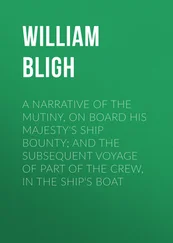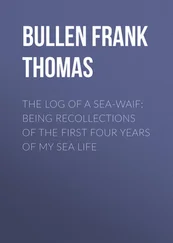Saturday, 6 August/Sunday, 7 August
SS + 58 h 40 mins
15.10 UK – 18.10 Moscow – 03.10 Kamchatka
Petropavlovsk docks
It was past three o’clock in the morning and still there was work to do to ensure everything was secured on deck. The single welder did his job methodically, the glowing beads of molten metal creeping with agonising slowness across the joints. Once the half-deck where the crane would sit had been strengthened, Marcus Cave and Charlie Sillet set the welder on to attaching the crane itself. Its arm would be at full stretch when lifting Scorpio, putting a lot of strain on both the deck and the welds. If something gave out, it wasn’t just the ROV and the crane that would go crashing into the sea. Given Sillet’s seat on the front of the crane, he’d most likely follow them down.
As long as the weather didn’t turn nasty, there wouldn’t be nearly as much strain on Scorpio’s control cabin. Instead of wasting valuable time waiting for the welder, the crew of the ship were sent to find chains and shackles with which the cabin could be lashed down. With that done, Riches went with Captain Holloway to inform the ship’s Master that they were ready to go. Riches told him he was confident nothing was going to fall off the ship if they started moving and that, in this weather, the welder could finish the job as they made their way to the rescue site. It had stopped raining, the wind was light and the sea looked calm.
The Master listened, nodded and agreed the ship was ready to depart. But nothing happened. No orders were given, and on the dockside there was no sign of imminent departure; no one was standing by near the mooring ropes or preparing to stow the gangplank.
As they waited, Kent Van Horn called and asked if the British had any divers on their team. The answer was no. Low on space, they’d brought only a stripped down squad to operate Scorpio. Van Horn was worried about what might happen if the trapped submersible was freed and came to the surface in an uncontrolled manner. If AS-28 hit one of the surface vessels, it might become ensnared once again, or worse, damage a buoyancy tank and sink back to the seabed. Divers might well be needed to investigate such problems, or at the very least act as surface swimmers to remove debris from the submarine when it appeared on the surface. He’d brought some elite Navy divers – and a Navy doctor well versed in decompression sickness – and, since the UK team would be reaching the site first, it would make sense if they joined the UK’s vessel of opportunity rather than stay on theirs.
It was a good idea. Riches had established that KIL-27 had no divers and no medical facilities, despite the fact that they were a standard requirement on any rescue vessel. Beyond treating the effects of prolonged exposure, dehydration and foul air, the atmosphere inside a damaged submarine often slowly becomes more pressurised as water seeps in, exposing the men inside to decompression problems once rescued. Whether there were any medics on any of the other Russian vessels was unclear, but it was far better to have a spare doctor than end up with none.
Riches put the idea to Podkapayev, expecting an enthusiastic response. Instead he shifted uncomfortably and looked down at his feet as he replied that there was really no need, and that the Pacific fleet had both divers and doctors on hand. Riches nodded, but pressed his case. These were some of the best divers and medics in the business – having them on board could help and would certainly not hurt. The problem was evidently political, but thankfully Podkapayev had witnessed the efficiency of having backup teams during the NATO exercises and – after interminable checking with his superiors over the radio – agreed that the divers could be taken on board.
Saturday, 6 August/Sunday, 7 August
SS + 58 h 50 mins
15.20 UK – 18.20 Moscow – 03.20 Kamchatka
The Elizovo–Petropavlovsk road
With the offload of the C5 at last complete, Kent Van Horn had finally managed to leave the airbase and was heading for the dockyards. He had with him his ship preparation team together with the three divers and the Medical Officer. Van Horn was feeling strangely dislocated, not just as a result of the unfamiliar geography, but also of the strange atmosphere. He found the marked lack of alacrity surreal, as if nothing was really the matter. All the training he’d been through with his team had been about doing everything they could to shave vital minutes off the response time. Yet here he was, sandwiched between two Russian military personnel, bumping through a pitch-black night in drizzling rain, about to do a school bus style drop off at different vessels because the Russians couldn’t spare enough vehicles to give each team a separate ride. Twenty-four hours ago he’d been in bed with his wife, looking forward to the weekend, and now he was somewhere – he wasn’t quite sure where – in the Russian darkness.
The bus passed through the dockyard gates with minimal delay, and lurched up alongside a rusting ship. Van Horn twisted in his seat, readying himself to jump out, but the Russians gestured to him to stay put. Instead they stepped out of the bus, shut the doors and walked over to the ship. There was a short conversation and the Russians walked back, got back inside, and explained that this was the US ship, not the UK one where the divers were to be dropped. Orders were given to the driver who took off again, bumping down the potholed dirt roads of the dockyard, taking a tortuously circuitous route through the rusting machinery. Ten long minutes later, the bus pulled up alongside another rusting ship. Again the Americans were kept inside while the Russians talked with the sailors on the dockside. Once again they returned and got back into the bus. There had been a mistake, they said. The first ship had in fact been the British ship – this was the one that had been assigned to the Americans. Van Horn and the other members of his advance party were not allowed to get out, however. All of them had to go all the way back to the first ship to drop the divers on the British ship before returning to prepare their own.
At 03.40 the minibus finally arrived back at KIL-27 , and the four American divers jumped out and hotfooted it up the gangplank with their gear. After being introduced to the Master they were shown to their quarters by one of the Russian crewmen. They returned two minutes later, their noses still wrinkled. Whether it was an intentional message or not, lying in the middle of their allotted cabin was a huge, fresh pile of dogshit. Carefully avoiding the mess, they put down their kit bags, together with a box of ration packs, and made their way back out on to deck.
The ship’s engines had been running since the team had boarded in order to get power to their equipment and to the welder, and their throbbing had blended into the background of the busy thrum of activity on deck. The US divers and doctor had been on board for around ten minutes when Riches felt the deck shift beneath him. He looked up from what he was doing to see the docks sliding past. A dockworker – having evidently just let go of the ship’s lines – was scrambling backwards, fast. With a terrible screeching noise, KIL-27 scraped down the concrete jetty and sheared huge chunks of concrete off the pier.
Normally in a ship this size, if you couldn’t get tugs to pull you from your berth you prised the stern from the jetty by pushing forward against mooring ropes attached to the bow, then reversed away. It didn’t take long. Instead, KIL-27 ’s captain had decided to steam out ahead under her own power, and lots of it. The rudder was hard over to starboard and the ship was wreaking havoc both with the pier and with her own hull. None of the crew seemed to bat an eyelid. Having more than one welder in an emergency was out of the question, but destroying the harbour on departure was evidently fine.
Читать дальше












